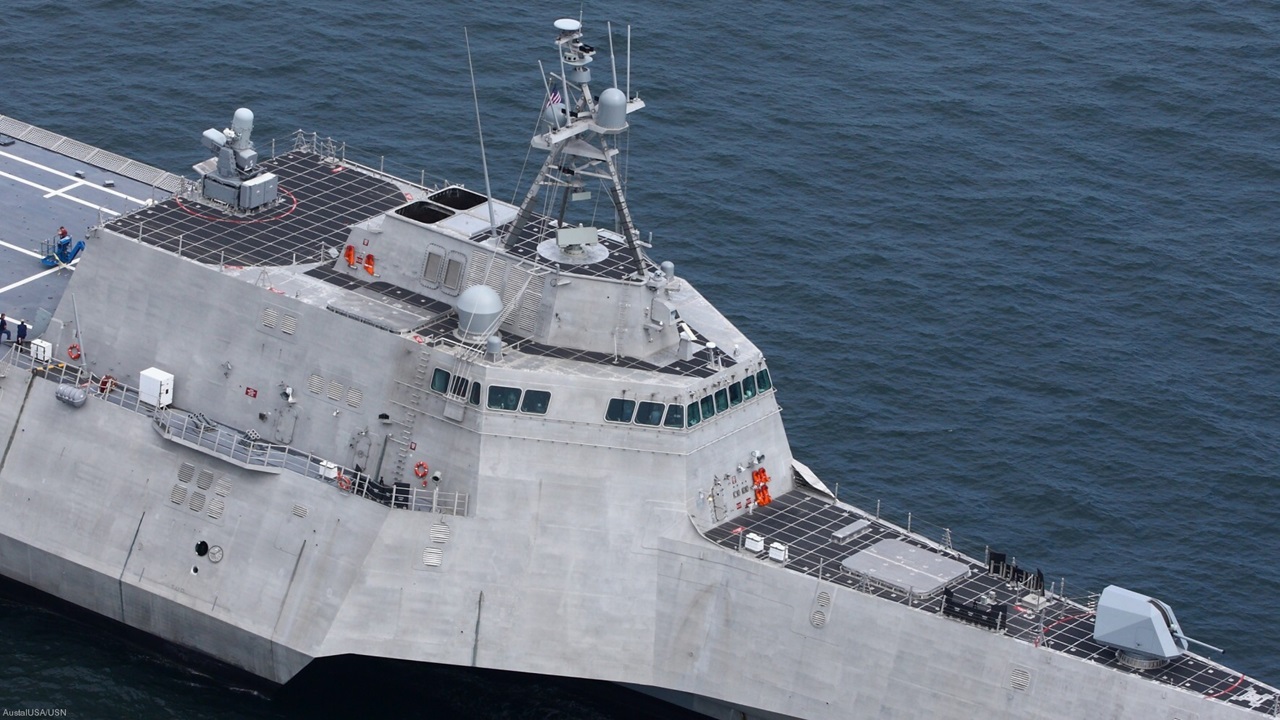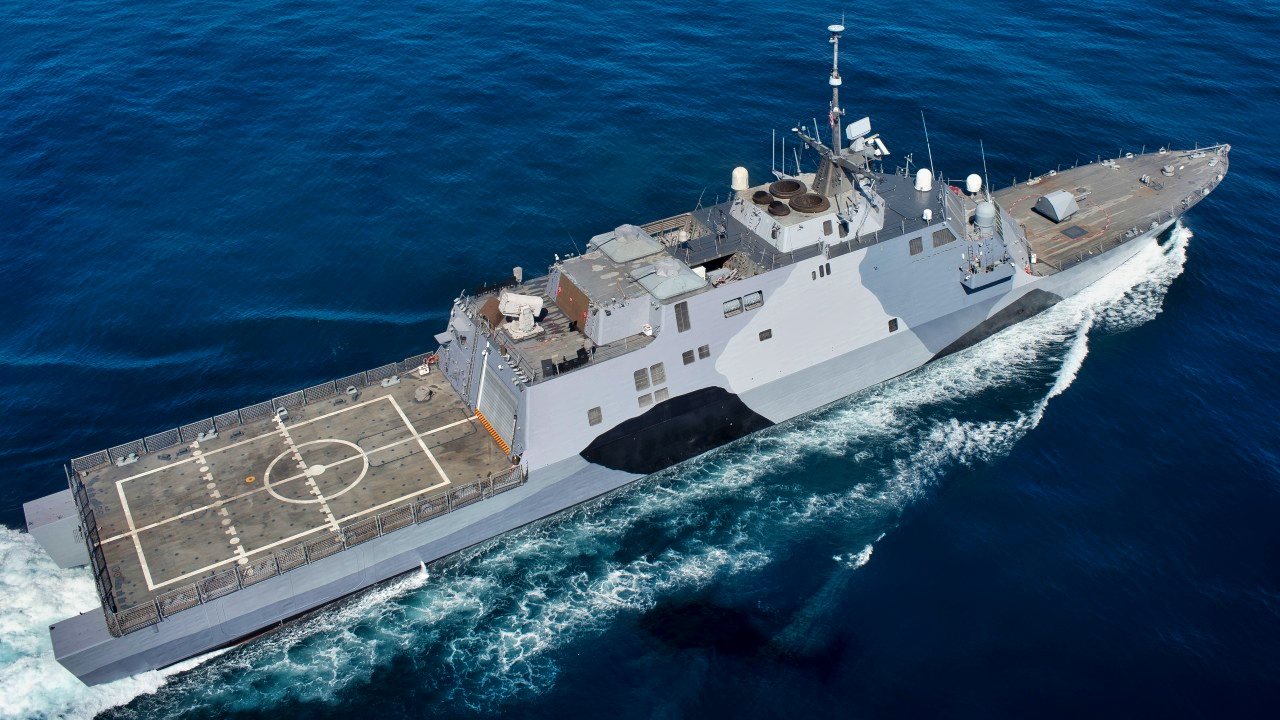The U.S. Navy Needs to End the Littoral Combat Ship Disaster Now
Overhyped expectations, high costs, and underperformance have plagued the U.S. Navy’s Littoral Combat Ship (LCS) program. The ships have faced numerous issues, including problematic Combined Diesel and Gas (CODAG) powerplants and hulls prone to cracking at high speeds.
Summary and Key Points: The U.S. Navy’s Littoral Combat Ship (LCS) program has been plagued by overhyped expectations, high costs, and underperformance. The ships have faced numerous issues, including problematic Combined Diesel and Gas (CODAG) powerplants and hulls prone to cracking at high speeds.

-Despite attempts to fix these issues, the Navy has lowered its expectations, shifting the LCS’s role to anti-submarine warfare and minesweeping. The plug-and-play modular design, once a key selling point, proved impractical in practice.
-In response, the Navy has begun retiring some LCS units early, with the USS Sioux City being decommissioned after just five years of service. The program's failures have resulted in a loss of nearly $7 billion, making the LCS a costly experiment. Despite these setbacks, the Navy continues to pursue new shipbuilding projects, raising concerns about its ability to learn from past mistakes and the impact on taxpayers.
The Navy Needs to Put the Littoral Combat Ship Out of Its Misery
The U.S. Navy’s Littoral Combat Ship (LCS) is a total mess. The program is overhyped, too expensive, and underperforming. The LCS is a continual money pit, no matter how hard the Navy tries to spin things to the contrary.
Can’t Get From Here to There
One of the areas of concern that I have written about before is the class’s Combined Diesel and Gas (CODAG) powerplant. It “connects to both a diesel for fuel-efficient, low-speed cruising and a gas turbine for high-speed but gas-guzzling sprints,” as Sydney J. Freedberg, Jr., described in Breaking Defense.
Because of issues with the CODAG, the LCS has struggled to achieve its mission objectives.
In 2021, USNI News reported that RENK AG and Lockheed conducted “a root cause analysis” that determined the problem was in the “high-speed clutch bearings.” Whenever your mechanic starts pontificating about “root causes,” followed on by claims that “clutch bearings” are the problem, sell the vehicle and run over to the manufacturer’s competitor for a better product.
Chronically bad engines are a very bad thing for warships belonging to an expeditionary fleet such as that of the U.S. Navy.
German engineering firm RENK AG produces the troublesome CODAG powerplant for the LCS. Along with the ship’s manufacturer, Lockheed Martin, it has tried to repair the faulty system. They claim that the problem has been resolved, but the Navy has increased testing of its expensive LCS fleet.
Relatedly, the hulls of the LCS tended to crack when the warship traveled at high speeds.
The Soft Bigotry of Low Expectations
The Navy lowered its expectations for the boats by changing the LCS’s operational requirements. The Pentagon now says the LCS is intended for anti-submarine warfare and minesweeping. Here again, much like the Russians with Admiral Kuznetsov, the U.S. Navy is struggling to paint bright red lipstick on an ugly pig.

Then there was the plug-and-play modular design for the LCS. Per Noah Robertson over at Defense News, “The submarine warfare package, intended to detect and attack submarines in shallow waters, needed a sonar hitched to the back of the ship, but it wasn’t trailing correctly. The minesweeping package, designed to clear mines with unmanned systems, began hitting delays.”
On top of that, “the modular design—in which users could rotate equipment—was also proving impractical in terms of transporting the packages and quickly installing them.”
So, the ship couldn’t fight. A warship that can’t fight is pretty useless.
Retiring the LCS…at Five Years Old and $7 Billion
Despite what they say, however, the Navy has quietly acknowledged that these boats are sunk costs. That’s why they started retiring the oldest units. In 2023, USS Sioux City was decommissioned. It was just five years old when it was retired from service.
The LCS cost the Navy, and thus the taxpayer, $500 million per unit, according to online government watchdog ProPublica. It took years to make these boats somewhat operational. According to some estimates, decommissioning them early, as the Navy is doing, will amount to a loss of almost $7 billion.
Now the Navy is looking to build a new system.
The Navy will likely learn little from this experience. Indeed, the Navy has already blown its money on the redundant Constellation-class frigate and the totally useless Gerald R. Ford-class aircraft carrier. The bureaucracy is broken, and taxpayers and sailors are made to pay for its failures.
Author Experience and Expertise: Brandon J. Weichert
Brandon J. Weichert, a National Interest national security analyst, is a former Congressional staffer and geopolitical analyst who is a contributor at The Washington Times, the Asia Times, and The-Pipeline. He is the author of Winning Space: How America Remains a Superpower, Biohacked: China’s Race to Control Life, and The Shadow War: Iran’s Quest for Supremacy. His next book, A Disaster of Our Own Making: How the West Lost Ukraine, is due October 22 from Encounter Books. Weichert can be followed via Twitter @WeTheBrandon.
All images are Creative Commons or Shutterstock.
From the Vault
Russia Freaked Out: Why the U.S. Navy 'Unretired' the Iowa-Class Battleships
Battleship vs. Battlecruiser: Iowa-Class vs. Russia's Kirov-Class (Who Wins?)


